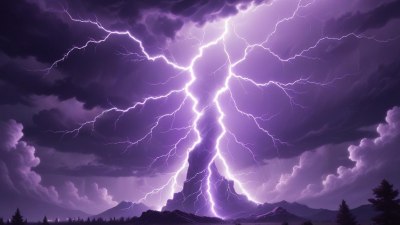Why You Remember the Weather on the Day You Fell in Love
Explore why the weather on the day you fell in love stands out in your memory, linking emotions, sensory details, and brain functions.

Image created with Flux Schnell
Many people vividly recall the weather on the day they fell in love. Whether it was a bright sunny afternoon, a gentle rain shower, or a crisp autumn evening, these details seem to etch themselves deeply in memory. This phenomenon is not merely coincidence; it is rooted in how our brains process emotions, sensory input, and significant life events. Understanding why the weather becomes a memorable anchor for our romantic experiences reveals insights into human cognition, emotional association, and memory formation.
The unique connection between weather and memory begins with the strong emotional impact of falling in love. Love triggers heightened emotional states, releasing neurochemicals such as dopamine and oxytocin. These chemicals enhance the brain’s ability to encode memories, especially details tied to emotional contexts. When a significant emotional event like falling in love occurs, the brain prioritizes the storing of surrounding sensory information, including the weather, to create a comprehensive memory of the experience.
Emotional Intensity and Sensory Memory
Emotions serve as powerful moderators of memory retention. Events charged with strong feelings tend to be remembered more clearly than neutral experiences. When the heart races or butterflies flutter, the brain flags that moment for detailed recollection. The meteorological conditions accompany the sensory experience as part of the environment that the emotions inhabit.
Weather activates sensory perceptions such as warmth on the skin, the sound of raindrops, or the brightness of the sun. These perceptions anchor the emotional memory through a process called encoding specificity, where memories are tied to the context in which they formed. For instance, a cool breeze on a spring evening can be as much a part of love’s memory as the person you shared it with.
The Role of Context-Dependent Memory
Context-dependent memory explains why specific environmental factors, such as weather, become intertwined with our recollections. When you encode a memory, your brain stores not just the event but also the colors, smells, sounds, and physical conditions surrounding it. Later retrieval improves when similar contexts are encountered, making the original conditions important symbolic triggers.
This means the weather on that special day is not a random detail but an integral part of the memory’s context. Returning to a similar weather state can evoke a powerful sense of nostalgia or bring a flood of feelings associated with the initial romantic encounter. The environment becomes an emotional landmark that secures the memory’s longevity.
Neurobiological Mechanisms Behind Memory Encoding
From a neurobiological perspective, the amygdala, a brain region responsible for processing emotions, plays a central role in coupling emotional significance to memory formation. When love is involved, the amygdala enhances the encoding of relevant details, including environmental cues like weather. Simultaneously, the hippocampus organizes these details into long-term memory.
Furthermore, sensory input related to weather—such as the sensation of sunlight or the sound of rain—is processed in the sensory cortices and linked to emotional memories through neural networks. This integration ensures weather details are not discarded as trivial but stored as a vivid component of the love memory.
Cultural Narratives and Personal Meaning
Beyond biology and psychology, cultural storytelling influences how we perceive and remember the weather during romantic moments. Songs, books, movies, and folklore often romanticize weather conditions as symbolic of love—rain represents cleansing or renewal, sunshine signifies happiness and warmth, and autumn leaves evoke change and nostalgia.
These cultural associations provide additional layers of meaning, making people more attentive to weather-related details and more likely to remember them. The learned significance of weather in narratives about love conditions the brain to prioritize these sensory elements in memory encoding.
Memory Bias and Nostalgia
Yet, it is important to acknowledge the role of memory bias. Human memory, while powerful, is not perfectly accurate. The prominence given to weather details in memories of falling in love may be somewhat amplified over time by nostalgia and romantic expectations. People tend to reconstruct memories in ways that enhance emotional resonance, sometimes exaggerating certain aspects like the clarity of the sky or the crispness of the air.
This retrospective embellishment underscores how memories of love are dynamic, reconstructed based on personal feelings and cultural influences. The weather becomes part of a cherished narrative rather than just a factual detail.
Seasonal and Climatic Effects on Mood
Another angle to consider is how weather directly affects mood. Bright, sunny days often elevate spirits, while gloomy, rainy days may induce melancholy. The mood set by the weather can influence the emotional tone of events that occur during that time. If falling in love happens on a radiant afternoon, the association between positive mood and event strengthens the memory.
Conversely, some people may remember love blooming during less than ideal weather because it contrasts with their emotional state, making it stand out even more dramatically. Both pleasant and challenging weather conditions contribute unique emotional textures to memories.
The Impact of Novelty and Attention
The first moments of falling in love typically involve heightened attention and focus on the present experience. The novelty and excitement cause people to notice and mentally file away intricate surroundings, including weather details. This increased attentiveness ensures richer memory encoding than everyday events where attention is divided.
When you meet someone who triggers romantic feelings, you are primed for deep processing of everything surrounding you. The phenomenon known as the “weapon focus” effect, wherein attention narrows to emotionally salient features, might also extend to environmental details perceived as meaningful, such as unexpected weather patterns or atmospheric qualities on that special day.
Examples from Literature and Popular Culture
Literature and cinema often illustrate the link between love and weather, reinforcing how people associate the two. Classic novels describe love blossoming under golden sunsets, or heartbeats synchronized with the rhythm of falling rain. Romantic movies frequently use weather as a dramatic element that mirrors or enhances the emotional stakes of a scene.
These portrayals not only reflect actual human experiences but also shape collective perceptions of what love memories should include, strengthening the mental link between romance and atmospheric conditions.
Practical Implications of Weather-Linked Memories
Knowing why we remember the weather on the day we fell in love can be useful in several ways. For couples, revisiting similar weather conditions can enhance bonding and evoke romantic memories, fueling positive relationship dynamics. For psychologists, understanding these memory mechanisms aids in therapy around emotional memories and relationships.
Furthermore, this knowledge helps in designing meaningful experiences, such as weddings or anniversaries, aiming to embed lasting emotional memories. Incorporating sensory elements like weather or simulated environmental cues can strengthen memory encoding and retrieval.
Memory and the Passage of Time
Memories evolve with time, and how individuals remember the weather on their day of love may shift as introspection deepens or as life circumstances change. Seasonal anniversaries often prompt reminiscence grounded in weather details, reinforcing their prominence. Over years, the ambiance of that first encounter—the precise weather—may become a symbol of enduring affection and identity.
This phenomenon reflects the human desire to anchor significant life moments in tangible experiences. The weather, constantly changing yet cyclical, becomes a perfect metaphor and mnemonic device for love’s lasting impact.
In summary, the reason you remember the weather on the day you fell in love is multifaceted, encompassing emotional arousal, sensory processing, neurobiological mechanisms, cultural influences, memory biases, mood effects, and focused attention. Together, these factors weave the weather into the rich tapestry of your most cherished romantic memories. The sky, whether clouded or clear, becomes more than just a backdrop—it is an integral piece of your heart’s story.











